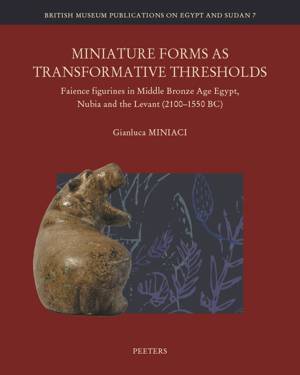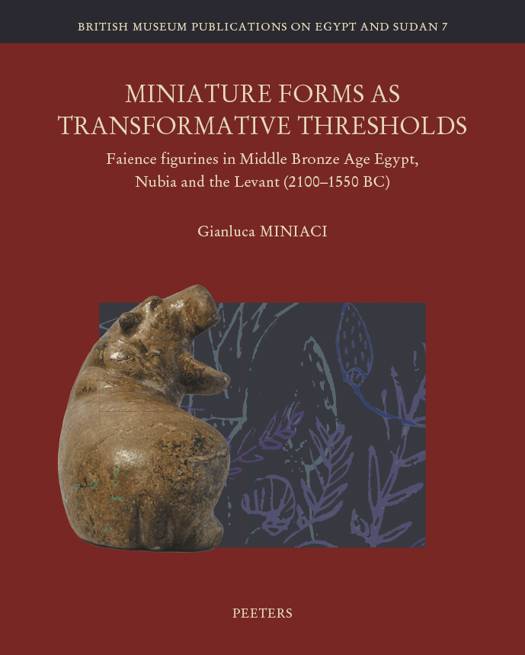
- Afhalen na 1 uur in een winkel met voorraad
- Gratis thuislevering in België vanaf € 30
- Ruim aanbod met 7 miljoen producten
- Afhalen na 1 uur in een winkel met voorraad
- Gratis thuislevering in België vanaf € 30
- Ruim aanbod met 7 miljoen producten
Zoeken
Miniature Forms as Transformative Thresholds
Faience Figurines in Middle Bronze Age Egypt, Nubia and the Levant (2100-1550 Bc)
G Miniaci
€ 155,00
+ 310 punten
Omschrijving
This volume is the first of two complementary volumes that explore the world of faience figurines in Egypt and its adjacent areas (the Levant and Nubia) in the Middle Bronze Age (2100-1550 BC). Its companion is published as Faience Figurines in their Archaeological and Museological Contexts (BMPES 19). This volume analyses Middle Kingdom Egyptian figurines made in faience, a lustrous and intensely blue glaze paste, skilfully manufactured with a high degree of accuracy. They represent one of the most iconic and signature categories of artefacts in ancient Egypt. The research especially focuses on the manufacture, iconography and distribution (spatial and chronological) of this type of figurines. Particular attention is given to the study of the archaeological contexts and their 'life cycle' in ancient Egyptian society. Indeed, the tangibility and proximity (given the reduced scale) of the figurines engender intimacy, making them more involved in human interactions, in contrast to larger statues that are far less accessible. As a result, faience figurines represent one of the best artefacts for exploring the 'social narrative' of ancient Egyptian society. They were used to express concepts, ideas, feelings, and visions that were specific to certain communities and cultures. Therefore, figurines inevitably encapsulate fragments of human stories and customs of the society. An extensive Iconographic Appendix provides a detailed analysis of the wide range of subjects represented by these figurines: hippopotami, lions, baboons, cats, dogs, hedgehogs, as well as humans, dwarfs or grotesque creatures, females (with truncated legs), vessels, vegetables, and a limited number of hybrid creatures, such as Aha/Bes and Ipy/Taweret.
Specificaties
Betrokkenen
- Auteur(s):
- Uitgeverij:
Inhoud
- Aantal bladzijden:
- 739
- Taal:
- Engels
- Reeks:
- Reeksnummer:
- nr. 7
Eigenschappen
- Productcode (EAN):
- 9789042936249
- Verschijningsdatum:
- 31/12/2023
- Uitvoering:
- Hardcover
- Formaat:
- Genaaid
- Afmetingen:
- 240 mm x 300 mm
- Gewicht:
- 1737 g

Alleen bij Standaard Boekhandel
+ 310 punten op je klantenkaart van Standaard Boekhandel
Beoordelingen
We publiceren alleen reviews die voldoen aan de voorwaarden voor reviews. Bekijk onze voorwaarden voor reviews.











